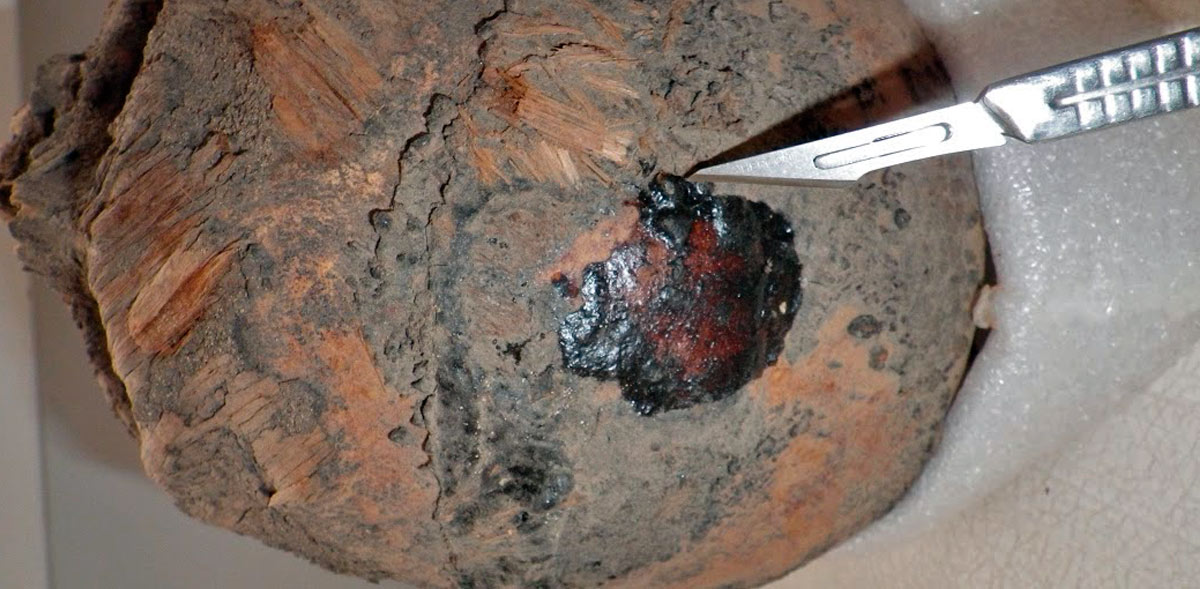Chinchorro mummies with goo-like decomposition. Image via Vivien Standen/Harvard
Climate change is destroying the world’s oldest mummies, with the decomposition of Chinchorro remains in a museum in Chile seeing them melt to black goo.
Experts from around the world were recently contacted by researchers at University of Tarapacá’s archaeological museum in Arica, Chile, following the realisation that many of the 120 mummies housed there were wasting away at a visible rate.
The past 10 years, it seems, has seen the mummies actually melt to black goo as bone crumbles away, with the mystery behind the pacey decomposition catching many off guard.
After reaching out to a trio of experts, it turned out that climate change was the problem, finally catching up with these bodies a mere 7,000 years after their deaths.
A stark rise in humidity in Arica over the past decade has primed microbiobes in the mummies, described as “opportunists” by Ralph Mitchell, a professor emeritus of applied biology at Harvard University, who examined the rotting mummies.
“The key word that we use a lot in microbiology is opportunism,” Mitchell said. “With many diseases we encounter, the microbe is in our body to begin with, but when the environment changes it becomes an opportunist.”
The rise in humidity allows bacteria to grow, causing the mummies’ skin “to go black and become gelatinous,” said Mitchell. Similarly, if the humidity to dropped too low, then other negative side effects would hit the mummies. The ideal humidity levels for the specimens are 40-60pc.

The head of a Chinchorro mummy at San Miguel de Azapa Museum in Arica. Image via Marcela Sepulveda/Harvard
Arica is primarily a dry environment, with parts of the desert without rain for hundreds of years. But a rise in fog in the past decade may be down to climate change. And “because there is more moisture around, the mummies have begun to disintegrate,” he said.
According to Live Science, efforts to preserve the mummies are under way. “The museum’s researchers are measuring and adjusting the humidity, temperature and light in the room where the mummies are housed on a daily basis.”
Unless the mummies can be kept under the right temperature and humidity conditions, “the native micro-organisms are going to chew these guys right up,” Mitchell said.
“It is very important to get more information about what’s causing this and to get the university and national government to do what’s necessary to preserve the Chinchorro mummies for the future,” says Marcela Sepulveda, professor of archaeology at the University of Tarapacá.